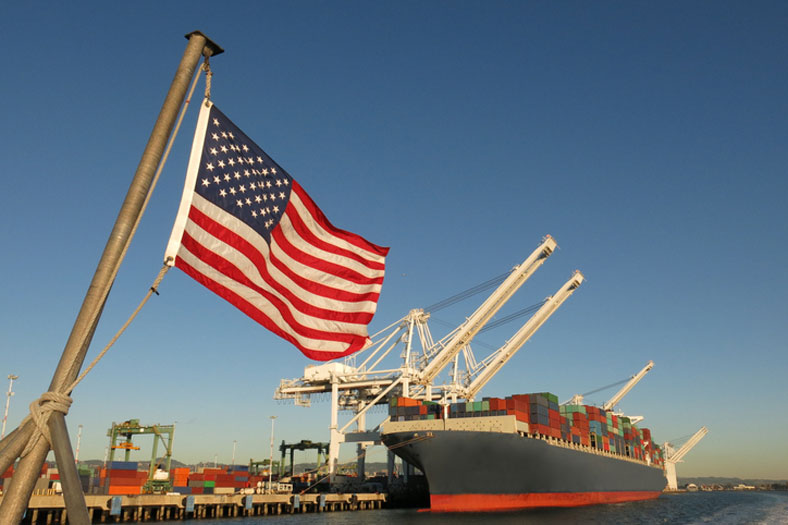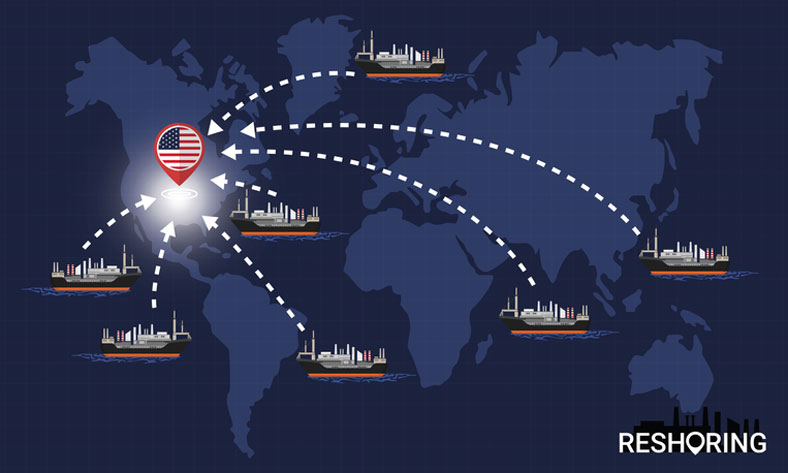Written by Scott Wilson
If there’s a hot topic in supply chain management circles today, it’s resilience. Even as the last entanglements and hiccups of the COVID-19 pandemic shake themselves out of the chain, new complications are coming in from the Russian invasion of Ukraine.
Executives aren’t always fast learners, but getting burnt twice is enough for anyone. Many organizations are looking for ways to not get caught out again.
In fact, a 2021 survey by Kearney found an astounding 92 percent of executives reporting that they were either considering or already engaged in reshoring portions of their supply chain operations.
Whether you are in that 92 percent or the lonely 8 percent remaining, it’s just good planning to explore your organization’s options for near-shore supply chain strategies.
You could say there are as many unique strategies for reshoring as there are companies with international supply chains. And you can be sure that everyone out there is looking for a distinct strategic advantage.
Within that larger trend, you can find four significant supply chain management strategies that any organization can adopt to start bringing operations and sourcing back closer to home.
1. Near-Shoring: Bringing Your Supply Chain Only Part Way Back to Base

Reshoring can also mean near-shoring… depending on the business, a regional shift can do as much to bring more resilience and stability to your supply chain operations as a strictly domestic relocation.
So many organizations aren’t so much bringing supply chain operations back home as closer to home. Setting up operations in traditional partner countries like Canada or Mexico may have advantages over bringing them back to the United States.
Around 95 percent of the wiring in a 787 Dreamliner is produced in Mexico.
2. Adding New Suppliers Without Quitting the Ones You Already Have

The Kearney survey teased out more subtle strategies than just wholesale reshoring.
Even though around half of respondents had already been bringing some sourcing and operations back to the States, everyone recognizes it would be totally untenable to expect domestic suppliers to cover all sourcing for all materials all the time.
Instead, companies focused on using near-shore capacity as an addition to their overseas supply chains. It’s a path that both opens up options while mitigating risk.
For supply sourcing that is readily available and not excessively expensive, domestic and near-shore options can provide surge capacity, with the option to shift over entirely if overseas chains get strained.
3. Conducting a Piece-Meal Reshoring Strategy

For some companies, it might make most sense to bring home certain parts of the supply chain, but not others.
It’s rare, but some resources may actually be available domestically at competitive prices. Those are an easy option to reshore entirely.
But even when costs are higher from domestic suppliers, that premium is often worth the assurance that materials and components are guaranteed to be there when needed.
4. Entirely Refocusing Your Supply Chain Domestically

The most ambitious strategy is to give your entire operation a kind of reboot. This is more common among SMEs (Small and mid-sized enterprises) with more agility and flexibility. But it’s also more work than any of the other strategies because it involves going back to basics.
This strategy means going back to the core links in your supply chain and figuring out how to entirely restructure them around domestic suppliers and operations. That can mean developing your own manufacturing operations, retooling logistics systems, and cultivating new kinds of expertise on your own team.
Corporations taking this path are making a bet that the efficiency and speed that will come with reshoring and bringing some operations in-house will outweigh the cost advantages of outsourcing. Integration is a proven way to make that happen, but not every organization has the expertise to do it right.
There Are No Silver Bullets in Supply Chain Management Strategies for Reshoring

While near-shoring your supply chain cuts some risks out of the loop, it doesn’t bullet proof the entire system. In fact, it introduces some of the same kinds of risks and expenses that drove companies to off-shore in the first place.
It’s nice to join in the resurgence of American manufacturing, but if that turns out to be a temporary artifact from one administration that doesn’t win a second term in 2024, a lot of managers are going to have egg on their faces and unsustainable manufacturing costs.
Fitch’s August 2023 downgrade of America’s credit rating to AA+ came with cautions over deteriorating financial and political stability.
Of course, there are big multinational corporations that can’t really reshore their operations because they don’t operate in only one country. For them, it’s just shuffling around the deck chairs.
Getting the Education You Need To Develop Comprehensive Supply Chain Management Strategies Around Reshoring

These are big decisions, the kind that aren’t just left up to individual supply chain managers. For any of them to be effective, broad corporate buy-in and support at the highest levels has to be firm.
But that doesn’t mean reshoring isn’t worthwhile or can’t be effective. It only means it must be done thoughtfully and with larger strategic objectives in mind.
This is where an advanced degree in supply chain management can come in handy. Particularly with programs like an MBA in Supply Chain Management, you will get the right combination of strategic business perspective and technical SCM knowledge to help you make good reshoring decisions. Balancing the economic, operational, and logistical issues perfectly is how the winners and losers will be determined in the race to reshore. Your education can help you finish first.








